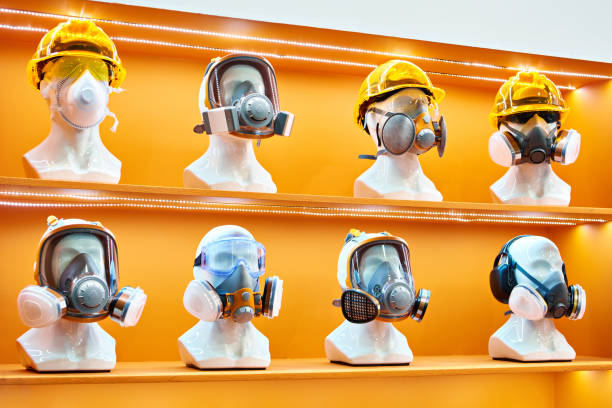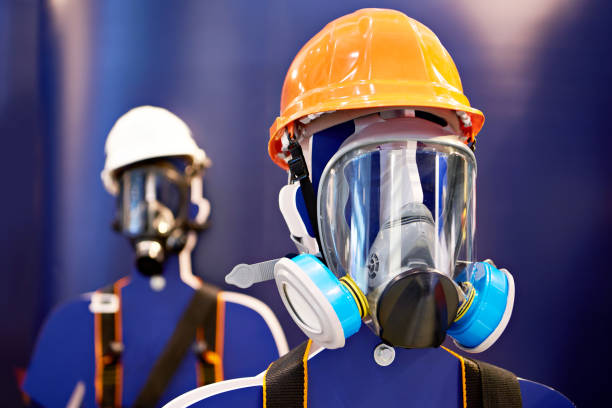Respiratory protection plays a key role in safeguarding the health of people exposed to various airborne hazards in any workplace. Recognizing and understanding common respiratory hazards is critical to selecting the right protective equipment.
In this post, we'll cover common respiratory risks in the workplace and the types of respiratory protective equipment, their features, and their applications to help employers and workers better understand and select respiratory protection.
1. Particulate Matter:
Sources: Dust, fibers, fumes, and biological contaminants.
Industries Affected: Construction, agriculture, woodworking, and healthcare.
2. Chemical Hazards:
Sources: Gases, vapors, and aerosols from solvents, paints, and industrial chemicals.
Industries Affected: Chemical manufacturing, painting, and laboratories.
3. Biological Contaminants:
Sources: Bacteria, viruses, and fungi present in healthcare, laboratories, and agriculture.
Industries Affected: Healthcare, agriculture, and food processing.
4. Asbestos and Silica:
Sources: Common in construction and industries involving mining or processing minerals.
Industries Affected: Construction, mining, and manufacturing.
5. Smoke and Combustion Byproducts:
Sources: Wildfires, industrial fires, and combustion processes.
Industries Affected: Firefighting, manufacturing, and emergency response.

1.Disposable Respirators:
Disposable respirators usually refer to protective masks such as N95 masks. This type of respiratory protective equipment is lightweight, easy to wear, disposable, and protects against most airborne particulate threats. For example, dust and fibers from construction and agriculture can be warded off with a dust mask. This type of respiratory protection is also often used for biological contaminants in some medical environments.
2.Half-Face Respirators:
As the narrative shifts to industries demanding a more versatile defense, the stage is set for half-face respirators. These respirators, encompassing the nose and mouth, offer a flexible shield against a spectrum of contaminants. Their interchangeable cartridges transform them into adaptable defenders, suitable for safeguarding against particulates during construction, noxious fumes in chemical handling, or even the amalgamation of both in diverse work environments.
3.Full-Face Respirators:
Full-face respirators provide protection beyond the boundaries of the mouth and nose. This type of respiratory protection covers the wearer's entire face against gases, neat and harmful particles, and has a wide range of applications in chemical manufacturing, pharmaceutical laboratories and firefighting.
4.Powered Air-Purifying Respirators (PAPRs):
Venture into spaces where the air is saturated with complexities, and powered air-purifying respirators (PAPRs) come to the fore. Equipped with a motorized fan, these respirators propel a constant stream of filtered air, often encased in a hood or helmet. In healthcare settings battling infectious diseases or pharmaceutical environments demanding prolonged protection, PAPRs offer a breath of innovation, ensuring a continuous supply of purified air.
5.Self-Contained Breathing Apparatus (SCBA):
Imagine an emergency response scenario, a confined space rescue, or the roaring flames of a fire brigade at work — here, self-contained breathing apparatus (SCBA) stands as the pinnacle of respiratory fortification. Comprising a compressed air tank and a facepiece, SCBA provides an independent source of air, offering an unparalleled shield against the most extreme respiratory hazards in environments where the air itself has turned adversary.

Selecting the appropriate respiratory protection involves assessing the specific hazards present in the workplace, considering the duration of exposure, and ensuring the comfort and usability of the equipment. Employers must provide comprehensive training on the proper use and maintenance of respiratory protection. Regular equipment checks and adherence to safety standards contribute to a robust respiratory protection program.
In conclusion, a thorough understanding of respiratory dangers and the available protective measures is crucial for creating a safe working environment. By implementing the right respiratory protection strategies, workplaces can effectively mitigate risks and prioritize the health and safety of their employees.
Copyright © Hebei Sinotools Industrial Co.,Ltd. All Rights Reserved | Powered by  Sitemap
Sitemap